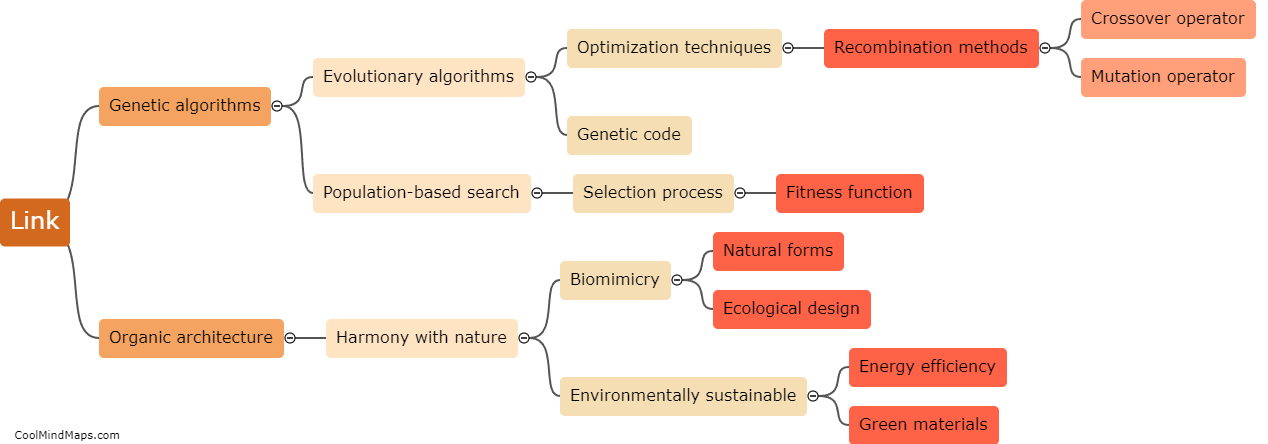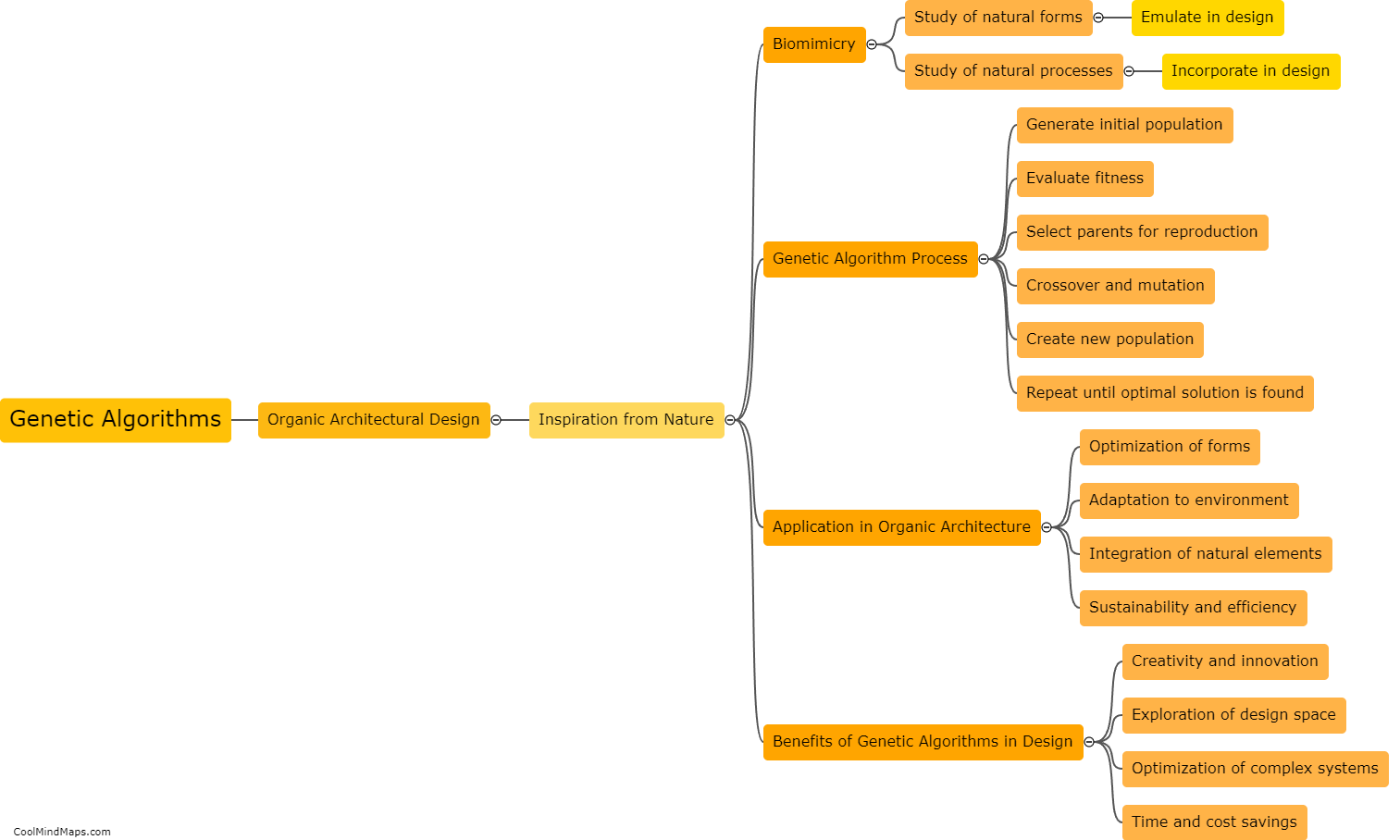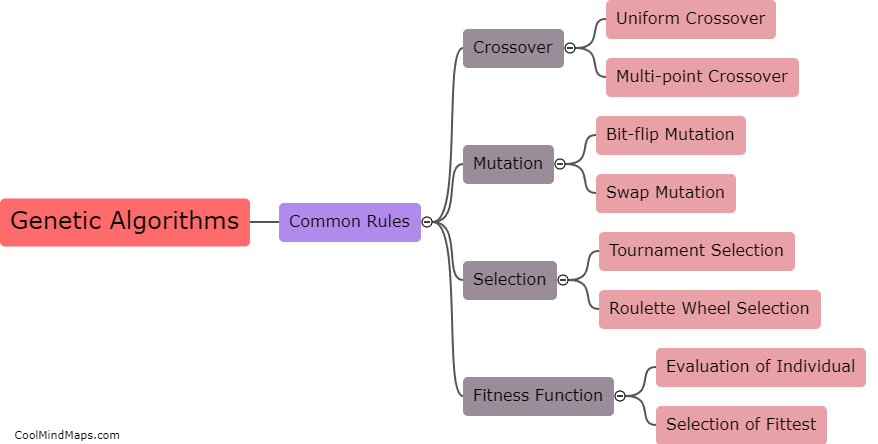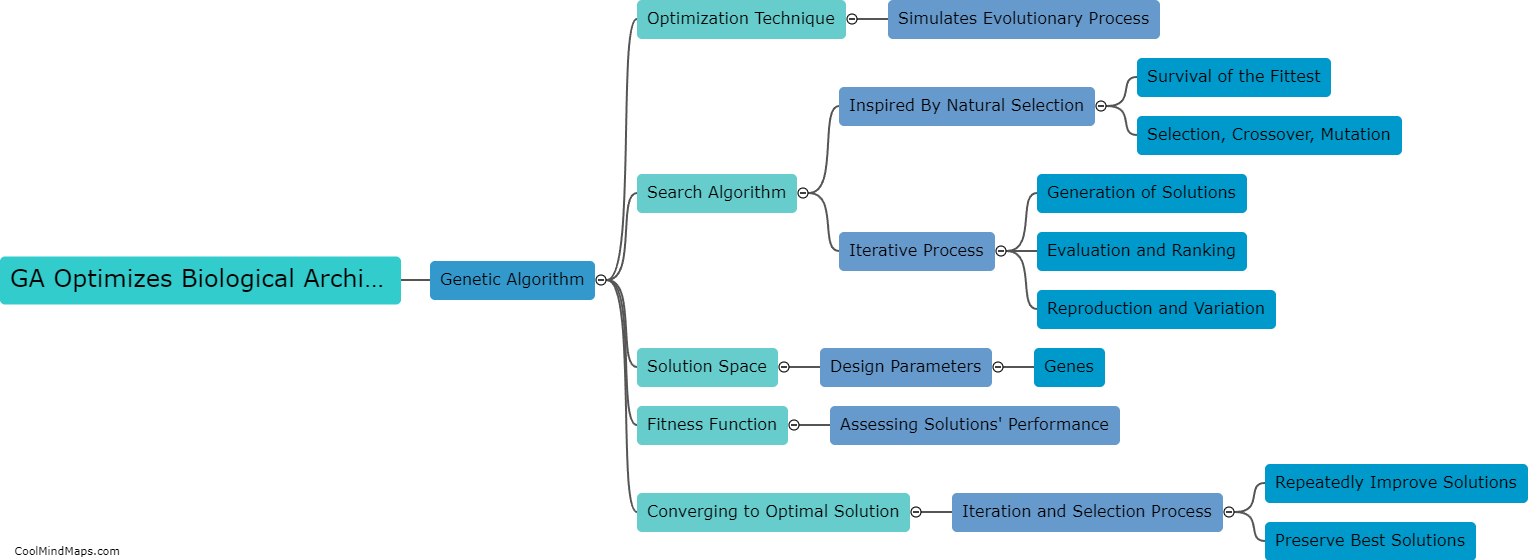How can genetic algorithm improve the structural integrity of biological architecture?
Genetic algorithms (GAs) are computational techniques inspired by the process of natural selection and genetics. They have proven to be effective tools in optimizing complex systems. In the context of improving the structural integrity of biological architecture, GAs can play a crucial role. By simulating the principles of evolution, GAs can generate a multitude of potential solutions to enhance the structural strength of biological systems, such as bone structures or plant stems. This can be achieved by iteratively evaluating and refining designs, identifying the most optimal genetic combinations that lead to improved structural integrity. By allowing for the exploration of a vast search space, genetic algorithms can facilitate advancements in bioengineering, leading to the development of stronger and more resilient biological structures.

This mind map was published on 19 November 2023 and has been viewed 95 times.











